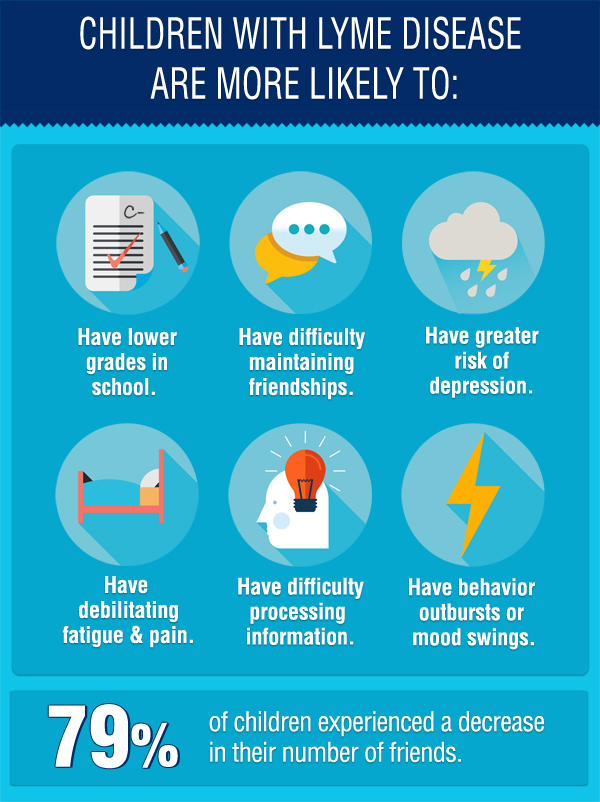-
Decrease Your Child’s Risk of Getting Lyme Disease
-
Lyme disease cases usually are highest in the summer and spring. It’s when ticks are around and it’s also when your child spends the most time outdoors. The best way to prevent Lyme disease is to avoid areas where ticks hang out. This includes tall grass, wooded areas, leaf piles, and brush. You can decrease your child’s risk of being bitten by a tick and getting Lyme disease with some easy precautions.
Video: Spray, Tuck, Zip – Sponsored by the California Department of Public Health. 2011 Grand Prize Winner, created by students from California State University – Dominguez Hills
-
-
Lyme Disease Prevention Tips
-
- Apply tick repellent.
Insect repellents can contain various concentration levels of DEET. Note: When a repellant has a higher concentration of DEET, it can last longer. The higher concentration does not mean the repellant is stronger. The American Academy of Pediatrics recommends Bite Blocker for parents wanting a natural, DEET-free repellant.
- Wear light colored clothing – Makes it easier to spot ticks.
- Have your child wear a hat when out in the woods. (Insect Shield offers hats, bandanas, socks and apparel already treated with repellant.)
- Apply tick repellent.
-
“Once Upon a Lyme: A Children’s Book” is a whimsical tale designed to educate our youth on how to protect themselves from ticks and Lyme Disease in a light, animated fashion.
-
- Wear long pants and long sleeves, if possible, and tuck pants into socks.
- Wear closed-toed shoes. Don’t wear open sandals.
- Do tick checks when returning from the outdoors. Check the entire body but look carefully through the hair, scalp and in hidden areas like, behind the knees, groin area, belly button, arm pits, behind the ears, and back of the neck.
- When bathing, remember an attached tick will not wash off from a shower.
- Throw clothing in hot dryer for 10 minutes to kill ticks. (Note: Ticks can survive a wash cycle.)
- Check your outdoor pets for ticks. (This will help reduce the chances of a tick being carried indoors by the pet and possibly being transferred to your child.)
- Avoid areas where ticks hang out. This includes tall grass, wooded areas, leaf piles, and brush.
- Stay on trails when hiking.
-
How to Remove a Tick
-
- Use fine-tipped tweezers to grasp the tick as close to the skin as possible.
- Pull upward with steady pressure to avoid breaking off the tick’s mouth-part. If this happens, remove the remaining piece with tweezers. If unable to do so, leave alone and let heal.
- After removing tick, clean bite area and your hands with rubbing alcohol, an iodine scrub or soap and water. (Never crush a tick with your fingers.)
- Place the tick in a Ziploc plastic bag or container and store in freezer. Should your child develop symptoms, the tick can be tested to identify any diseases it’s carrying.
-



